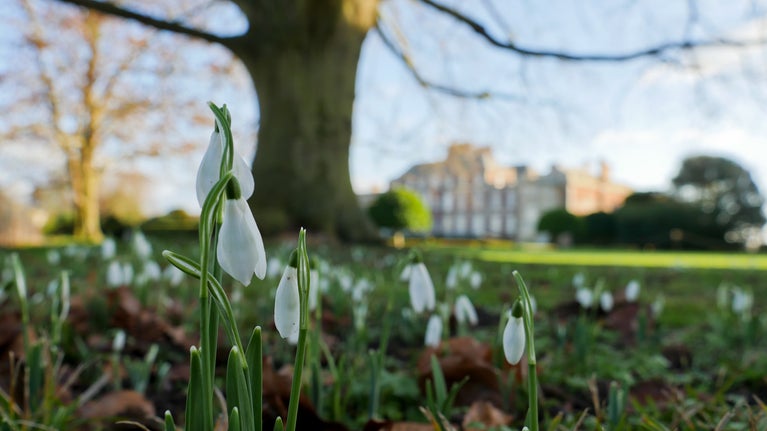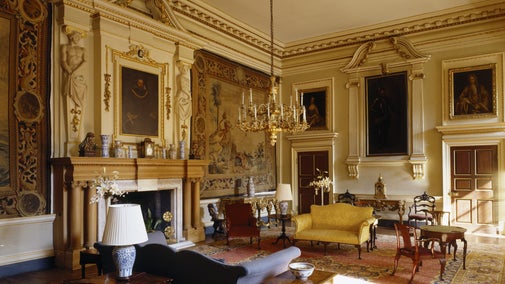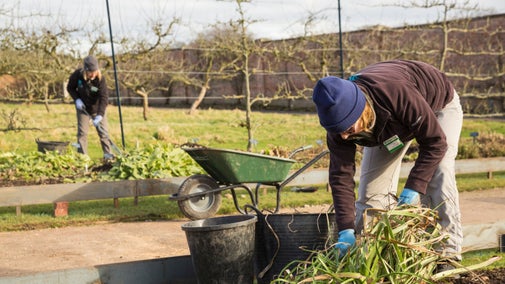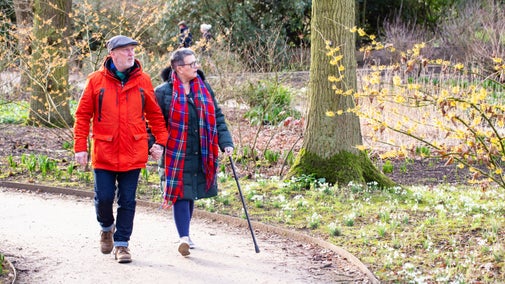
Discover more at Lyme Park
Find out when Lyme Park is open, how to get here, things to see and do and more.

The historic garden at Lyme offers variation throughout the seasons so it’s always a good time to visit. Nestled on the edge of the Peak District, the garden provides a carefully cultivated contrast to the rugged and wild moorland beyond its confines.
Visiting the garden at Lyme is an ever changing experience and no two visits are the same. Under the care of Head Gardener Stefan with the garden team, the garden transforms seasonally. Whether you witness the striking orange leaves of autumn or the bright colourful blooms of spring, there is plenty to discover. Lyme's garden is the second highest in the National Trust which means flowers often bloom later and last longer at Lyme.
With frosty mornings and a windswept moorland backdrop, the views of Lyme from the garden terrace are dramatic and ever changing during the colder months. Winter is a time to see the bare bones of the garden. The structure is laid out for all to see and you can appreciate the formal geometry around the house with straight edges, columns of yew and clipped hedges demonstrating man’s dominance in comparison to the wild moors and parkland beyond.
Flowers are rare in the winter, and so those that dare to brave the cold are all the more valued. Many are also highly scented, evolved to tempt sleepy bumblebees on mild days. Among the scents of the winter garden, the flowers on the way to the Vicary Gibbs garden are among the sweetest. Pass sweet smelling pink-tipped Daphne (Daphne bholua) overlooking the Italian Garden whilst in the Vicary Gibbs area, named after the famous gardener and close friend of the 2nd Lord Newton of Lyme, find the mixture of sweet smelling Winter Honeysuckle (Lonicera fragrantissima) glisten in the sun and spicy smelling Witch hazel (Hamamelis x intermedia ‘Arnold Promise’) that you can only see this time of year.

Despite the cold, snowdrops can be found thriving in pastures, woods, gardens and orchards across the UK from January to early March. Their white petals and green leaves brighten the winter months and signal that warmer seasons are on their way. See a drift of snowdrops around the Lake in the garden at Lyme, sure to lift your spirits.
Flowers are rare in the winter, and so those that dare to brave the cold are all the more valued. Look out for these winter delights on your next walk

Look out for early daffofils such as the popular Narcissus ‘Tête-à-tête’ a bright yellow flower with long trumpet shaped cups and sweeping up petals and flowering as early as February.
Follow the winding paths to dicover what's growing in the garden this season. There are lots of buggy-friendly paths in the garden – ask at the Ticket Office for more information.
You can complete many of the '50 things' in the garden at Lyme. Here's some of our favourites -

Find out when Lyme Park is open, how to get here, things to see and do and more.
From running, skipping and jumping around Crow Wood play area and dressing up in period costume inside the house, to spotting red deer in the park, there’s something for everyone at Lyme.

Inside the house you can discover unusual objects and strange secrets from six centuries of family history at Lyme in Cheshire.

There's over 1,400 acres of historic parkland to explore at Lyme in winter. Discover thriving wildlife during your walk into nature, and seek out the follies for some of the best views over Cheshire.

From ongoing conservation work to restoration work brought about by flooding and fires, the work of rangers and volunteers is a round-the-clock job.

Feeling peckish during your visit to Lyme? There's a choice of eateries, each serving a wide range of snacks and drinks. After you've refuelled, head to the shops to browse for a special gift or souvenir.

Discover our gardeners’ top tips so you can make the most of your garden, plot or window box.

From 18th-century water gardens and Arts and Crafts landscapes to intimate woodland gardens, there are so many places to discover.

From the woodland garden at Dunham Massey to the industrial garden landscape at Quarry Bank, discover winter gardens in bloom in this corner of the North West.
